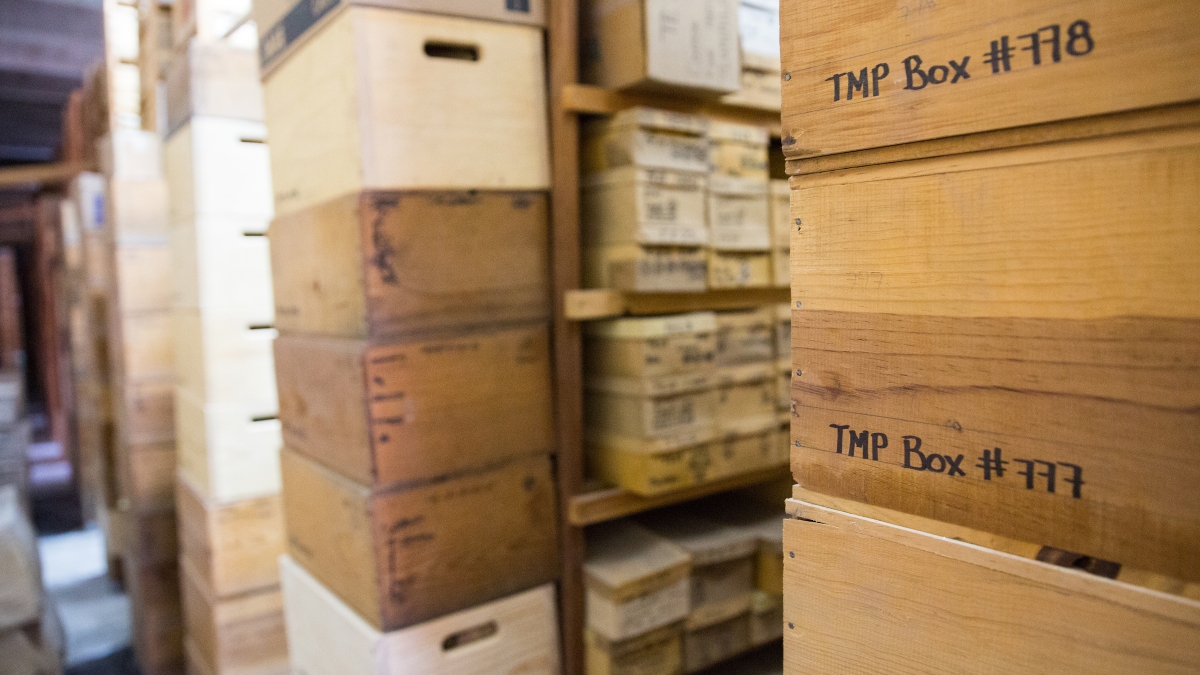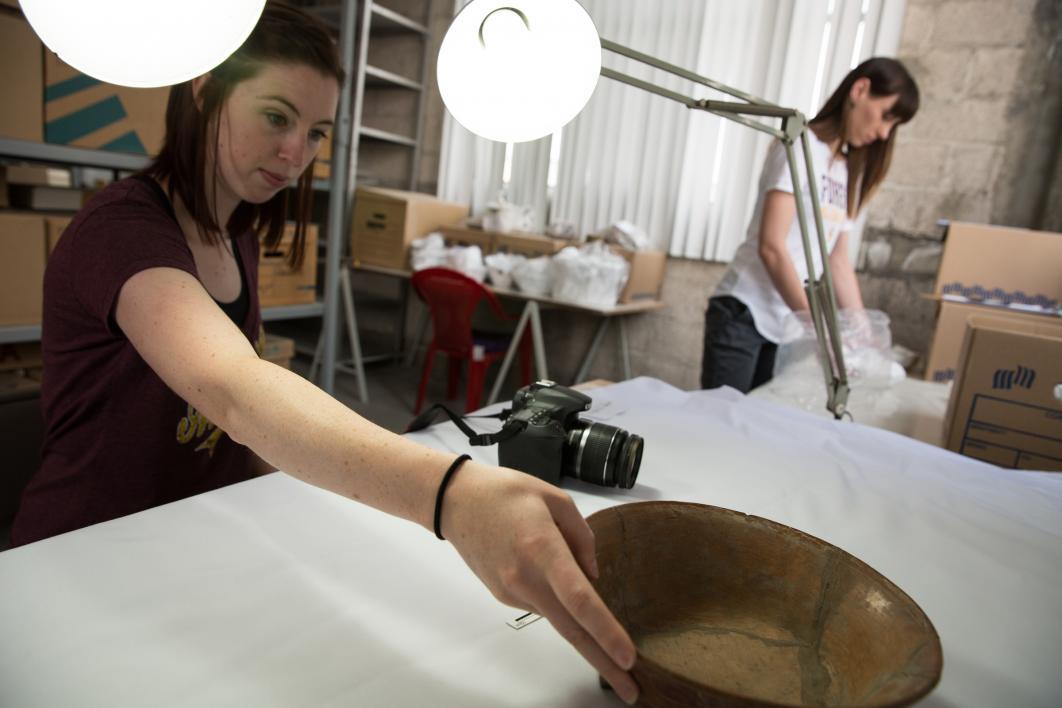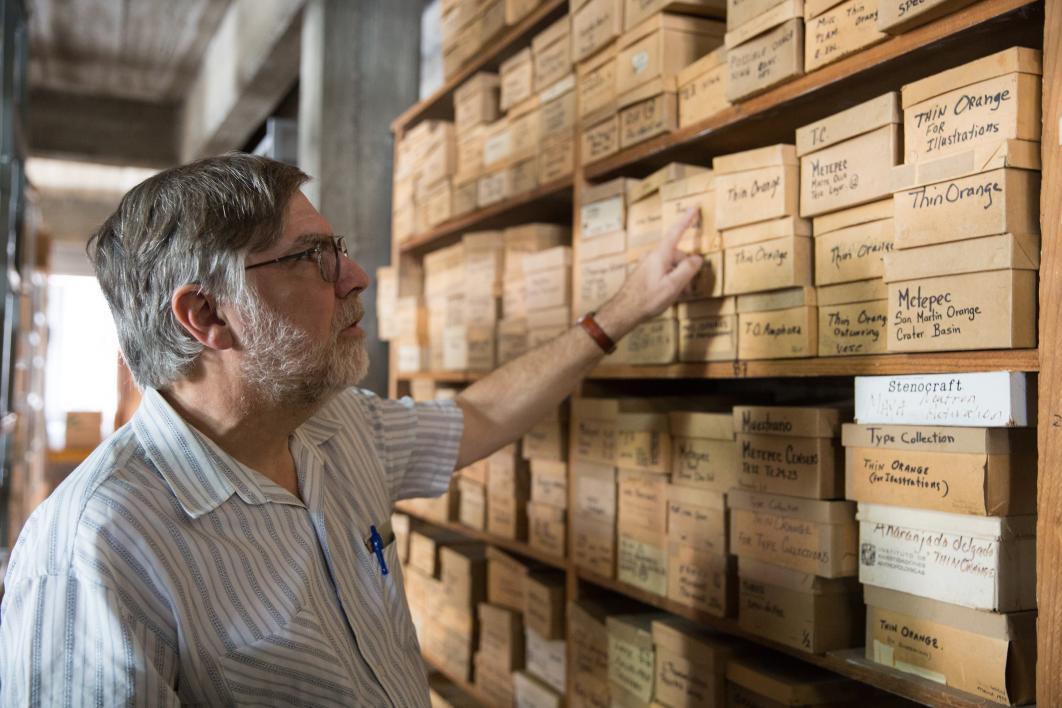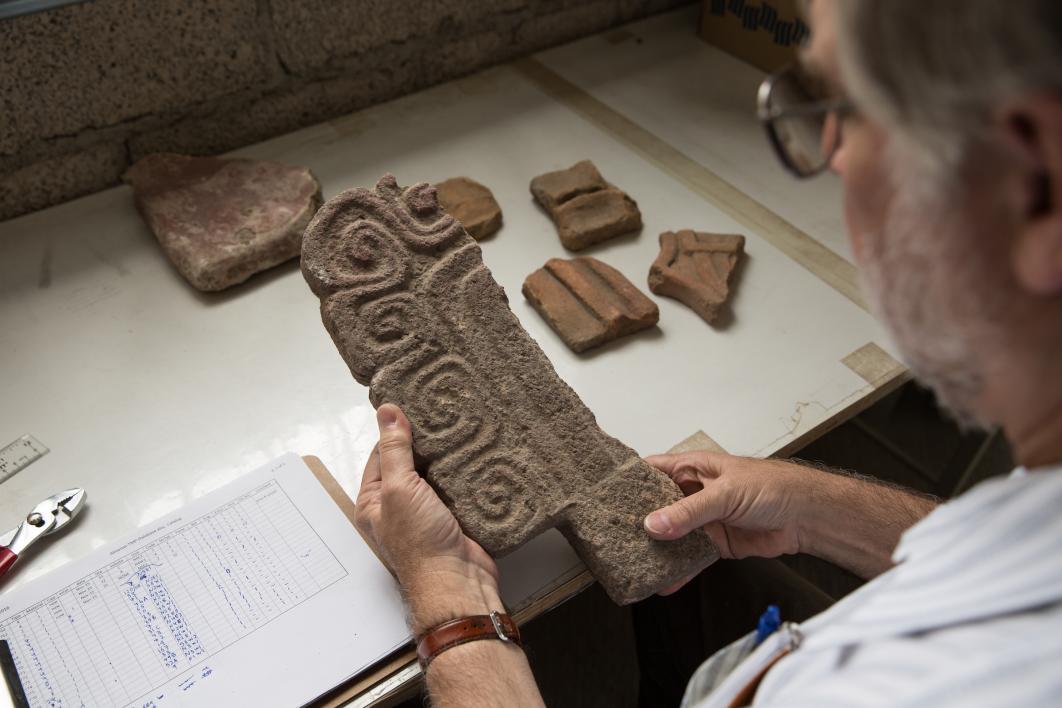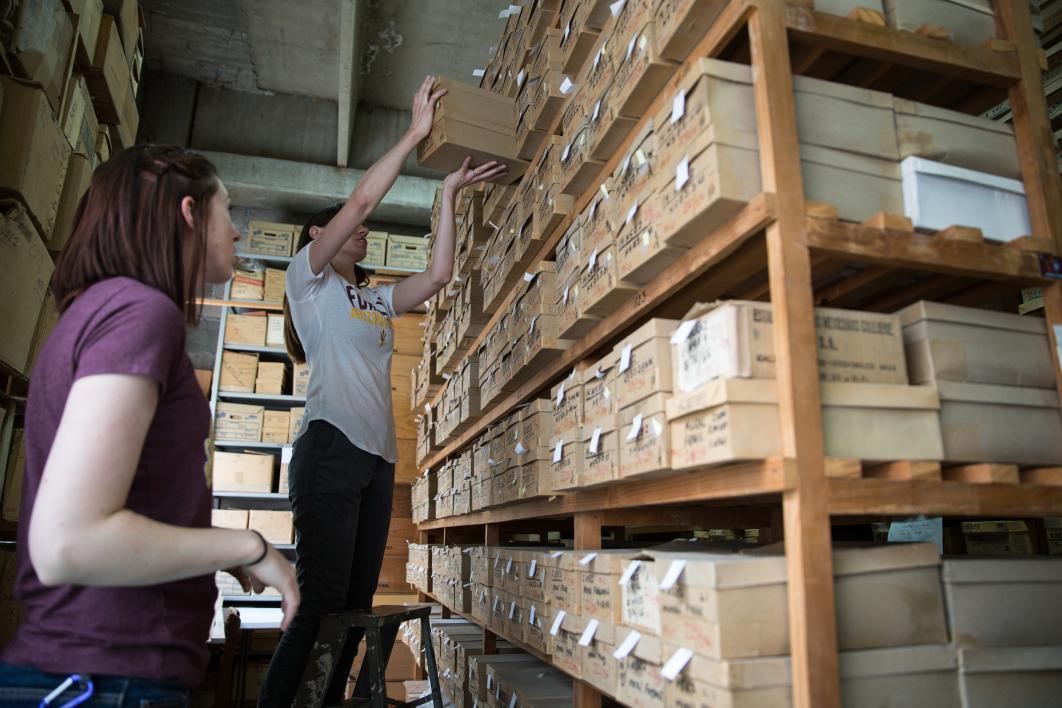Editor’s note: This is the third in a three-part series on ASU’s archaeology lab in San Juan Teotihuacan, Mexico. Click for the first and second installments. Lab director Michael E. Smith will appear Wednesday in Tempe to talk about new discoveries; find event information at the bottom of this story.
Step into the storerooms of the Teotihuacan Research Laboratory and the first thing you will think of is the government warehouse at the end of “Raiders of the Lost Ark.”
Shelves rise to the ceiling. Row upon row of cardboard and wooden boxes disappear into the gloom. It looks endless. Ranks of shoeboxes and wooden crates are labeled “figurillas,” end scrapers, sherds, fine knives, obsidian, unifacial perforators.
Ask a normal person to organize this in some kind of coherent fashion and he would become physically ill. It’s a "Sorcerer’s Apprentice" task.
Enter Katie Rush and Lisa Gallagher. They are not normal people. They are master’s students in museum studiesRush and Gallagher's museum studies program is part of the School of Human Evolution and Social Change. at Arizona State University, and they spent more than a month this past summer organizing the vast collection of artifacts, which encompass excavations going back to the 1960s at the ancient city of Teotihuacan in Mexico.
Understand we are not talking simply about things like pots, masks and knives, which you might see in a museum. These boxes hold millions of potsherds, flakes of obsidian and the like, things that mean little to laypeople, but which archaeologists can conjure entire worlds out of.
Gallagher and Rush weren’t horrified when they saw the ocean of boxes. To give an idea, no one knows exactly how many boxes are in the collection. A ballpark estimate of 24,000 is the consensus.
“We knew what to expect,” Gallagher said. “I was very excited when I came into the lab and saw all the work that needed to be done. There’s a sense of pride to be able to come here and help organize these collections that mean so much to Mesoamerican researchers.”
“It’s kind of like a library with objects,” Rush said. “In the collectors’ world, you’ve either got too much info or not enough; there’s never a happy medium.”
Video by Ken Fagan/ASU Now
They did a 33-day stint at the lab, which is part of ASU’s School of Human Evolution and Social Change in the College of Liberal Arts and Sciences.
“It’s time-consuming, but it’s not hard,” said Rush. “When you get the flow of things it goes pretty quickly.”
Each researcher cataloged their collection with their own system. What Gallagher and Rush did was create a uniform system for the entire collection. They organized boxes, did data entry and opened containers that hadn’t been opened in decades.
“We’re putting a uniform category on every box, so anyone can walk in the lab and know where it came from,” Gallagher said. “Our goal, when this is all done, is to have a master digitized inventory and have everything be under one uniform catalog.”
Unlike objects in a museum, these artifacts will be moved and handled and unpacked and repacked. It’s not organized for visitors to gawk at; it’s organized for maximum effectiveness for researchers.
For example, there are sample boxes of every type of Teotihuacano pottery: thin orange, gulf fine paste, Metepec. Trading across Mesoamerica was widespread. Researchers from a Mayan dig in southern Mexico might want to visit and see if what they have is from Teotihuacan.
“People want to come and see Teotihuacan pottery looks like,” lab director Michael Smith said. “A lot of people come to consult these.”
“Working with these boxes, it’s not your typical collection,” Gallagher said. “This is a different perspective on collections management. ... It’s designed to be used.”
Smith came to a museum studies class last spring and gave a presentation on Teo and offered two internships to sort out the collection.
“There’s not too many opportunities for students to go out of the country and work in different labs,” Gallagher said. “This is definitely a unique opportunity.”
Rush had done an internship at a museum in Dublin, so she jumped at the chance. She wasn’t familiar with Mesoamerican history and culture before working at the lab.
“It’s very fascinating, and the site is really cool,” she said.
Hear Smith speak in Tempe
What: "New Views of the Ancient City of Teotihuacan" lecture.
When: 6-8 p.m. Wednesday, Aug. 31.
Where: Alumni Lounge (Room 202), Memorial Union, Tempe campus.
Details: Free and open to the public. Find more at the events site.
More Arts, humanities and education

ASU's Neal Lester reflects on life, death of poet Nikki Giovanni
When Neal Lester heard on Monday that poet and activist Nikki Giovanni had died, the news hit hard.Lester, the founding director of Arizona State University’s Project Humanities and a Foundation…

Learning by stepping outside
By Adriana MaestasAmid a world increasingly captivated by all things digital, more than 200 Arizona teachers have crafted immersive educational experiences that nudge students to step away from their…

Behind the curtain: Discovering careers in the arts at ASU Gammage
For a group of students from Sunnyslope High School, Eastmark High School and AZ Teen Homeschool Co-op, a recent December day at ASU Gammage became much more than just a field trip. It became an eye-…
